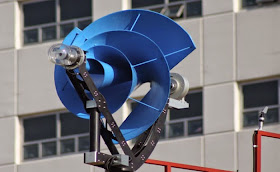Thin-film solar offers the characteristics of being flexible and low-profile to all kinds of surfaces. Unfortunately, the key ingredient to produce millions of thin-film solar panels is cadmium chloride,which is highly toxic and expensive.
Inspired by the production of "tofu", researcher from University of Liverpool, U.K., found that the magnesium chloride used to make tofu and bath salts could replace the highly toxic and expensive substance used to make the solar cells.
Safe and at a fraction of the cost – US$0.001 per gram compared to US$0.3 per gram for cadmium chloride, it makes the finding full of potential.
The cheapest solar cells being manufactured today are based on a thin film of insoluble cadmium telluride. Alone, these cells convert less than 2% of sunlight into electricity. By applying cadmium chloride to them, the efficiency increases to over 15%. When the team from University of Liverpool replaced the cadmium chloride with magnesium chloride, similar boost in performance was achieved.
Of course,
simply finding a cheaper ingredient doesn't necessarily make for a
cheaper solar cells. But the potential of replacing a highly toxic cadmium chloride makes the finding valuable.
Source: http://news.liv.ac.uk/2014/06/25/watch-tofu-ingredient-could-revolutionise-solar-panel-manufacture/
Source: http://news.liv.ac.uk/2014/06/25/watch-tofu-ingredient-could-revolutionise-solar-panel-manufacture/






